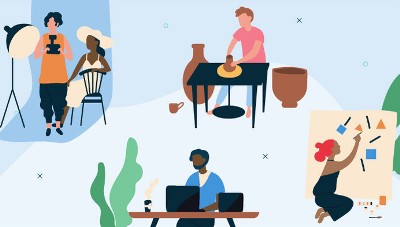This excellent HBR article ‘The Creator Economy Needs a Middle Class‘ investigates the possible mechanisms by which a middle class can be maintained in a world where “the winner takes all” according to the rule of the complex systems and the effect of the ‘long tail’.

The interesting historical point made by the article is that the creation and maintenance of the middle class did mostly happen through government intervention in the 20th century. In the Industrial Age it made also sense to compensate adequately those workers who would also be the core consumers of products and services.
In the internet creative age, left to itself, revenue tends to concentrate on less than 1% of the creators. This is what can be observed on most social media creative platforms. This is not sustainable if we want overall revenue to remain significant while we are moving more towards a creative age. What business model can then be put in place to ensure that a larger share of revenue is spread over a larger number of people?
The paper proposes a few solutions that would need to be driven by the platforms themselves (or mandated by law to the platforms):
- Focus on content types with lower replay value (like podcasts rather than music)
- Serve heterogeneity and empower niches rather than mainstream
- Recommend content with an element of randomness to expose others than the winners
- Facilitate collaboration and community
- Provide capital investment to up-and-coming creators
- Decouple creator payout from audience demographic (which is akin to some kind of redistribution)
- Allow creators to capitalize on superfans (direct fan payment)
- Create passive (or almost passive) income opportunities for creators
- Offer some kind of Universal Creative Income
- Provide more creator education and learning (as a service)
All in all, this excellent article (which I encourage you to read) reminds us that left to themselves, platforms that disseminate creative work will not all a middle class to emerge, and that active action is required to allow this.
The key point of course is that if this is not in the economic interest of the platform itself, it will need to be mandated externally until everyone understand it is of social importance to maintain a wealthy middle-class.











